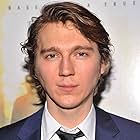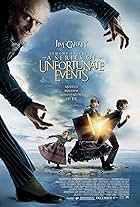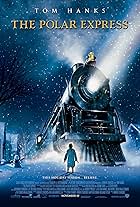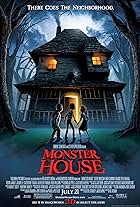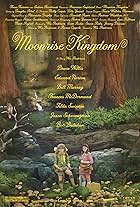Yearning for escape and adventure, a young boy runs away from home and sails to an island filled with creatures that take him in as their king.Yearning for escape and adventure, a young boy runs away from home and sails to an island filled with creatures that take him in as their king.Yearning for escape and adventure, a young boy runs away from home and sails to an island filled with creatures that take him in as their king.
- Awards
- 7 wins & 54 nominations
Catherine O'Hara
- Judith
- (voice)
Forest Whitaker
- Ira
- (voice)
James Gandolfini
- Carol
- (voice)
Michael Berry Jr.
- The Bull
- (voice)
- Director
- Writers
- All cast & crew
- Production, box office & more at IMDbPro
Storyline
Did you know
- TriviaIn July 2006, less than six weeks before the start of shooting, the Henson-built monster suits arrived at the Melbourne soundstage where Spike Jonze and his crew had set up their offices. The actors climbed inside and began moving around. Right away, Jonze could see that the heads were absurdly heavy. Only one of the cast members appeared to be able to walk in a straight line. A few of them called out from within their costumes that they felt like they were going to tip over. Jonze and the production crew had no choice, but to tell the Henson people to tear apart the fifty-pound heads, and remove the remote-controlled mechanical eyeballs. This meant that all the facial expressions would have to be generated in post-production, using computers.
- GoofsWhen Max says, "Wow!" when he sees Carol's world built from sticks, an earpiece is visible in Max Records' ear.
- Quotes
[last lines]
The Bull: Hey, Max?
Max: Yeah?
The Bull: When you go home, will you say good things about us?
Max: Yeah, I will.
The Bull: Thanks, Max.
Judith: You're the first king we haven't eaten.
Alexander: Yeah, that's true.
Judith: See ya.
Alexander: Bye, Max.
Max: Bye.
KW: Don't go. I'll eat you up; I love you so.
[all howl]
- Crazy creditsThe logos for Warner Bros., Legendary Pictures, and Village Roadshow Pictures are covered with Max's scribblings.
- ConnectionsFeatured in The Rotten Tomatoes Show: Duplicity/Knowing/I Love You, Man (2009)
- SoundtracksWorried Shoes
Written by Daniel Johnston
Produced by Karen O and Tom Biller (as tbiller)
Performed by Karen O and the Kids
Courtesy of DGC/Interscope Records
Featured review
A beautiful, audacious, roughly-hewn motion picture (adjectives that are no doubt overused in describing the picture's modus operandi), Spike Jonze's adaptation Maurice Sendak's adored children's book "Where the Wild Things Are" taps into the innocent, volatile world of a 9 year old boy the way few mainstream feature films have. It is original, unique, melancholy, and because of this several mainstream critics (and even lucid critics like Salon's Stephanie Zacharek) have derided the film. "There's no story"; "kids won't like it"; "it's an adult film about children, not a children's film"; "it's boring"; "the pacing is slow"...
What? Why did it become such a crime to make an abstract art film within the spineless confines of the Hollywood system? Doesn't Spike Jonze get credit for personalizing, therefore, retaining a substantial amount of voracity while delving into one of the most revered children's books of the last fifty years? What the hell is wrong with that? I understand that some people just don't respond to the abstract, pseudo-verisimilitude of pretentious art films, but there's a stripped-down purity to this picture that cannot be denied. It's not pretentious, but emotional and honest.
It's bold, it takes chances...why is it being chastised in the media? How often do we get movies like "Where the Wild Things Are"? It should be celebrated, not snidely dismissed (Ex. Lou Lumenick, NY Post).
What? Why did it become such a crime to make an abstract art film within the spineless confines of the Hollywood system? Doesn't Spike Jonze get credit for personalizing, therefore, retaining a substantial amount of voracity while delving into one of the most revered children's books of the last fifty years? What the hell is wrong with that? I understand that some people just don't respond to the abstract, pseudo-verisimilitude of pretentious art films, but there's a stripped-down purity to this picture that cannot be denied. It's not pretentious, but emotional and honest.
It's bold, it takes chances...why is it being chastised in the media? How often do we get movies like "Where the Wild Things Are"? It should be celebrated, not snidely dismissed (Ex. Lou Lumenick, NY Post).
- robertvaughn
- Oct 17, 2009
- Permalink
Details
- Release date
- Countries of origin
- Official sites
- Language
- Also known as
- Donde viven los monstruos
- Filming locations
- Production companies
- See more company credits at IMDbPro
Box office
- Budget
- $100,000,000 (estimated)
- Gross US & Canada
- $77,233,467
- Opening weekend US & Canada
- $32,695,407
- Oct 18, 2009
- Gross worldwide
- $100,140,916
- Runtime1 hour 41 minutes
- Color
- Sound mix
- Aspect ratio
- 2.39 : 1
Contribute to this page
Suggest an edit or add missing content























